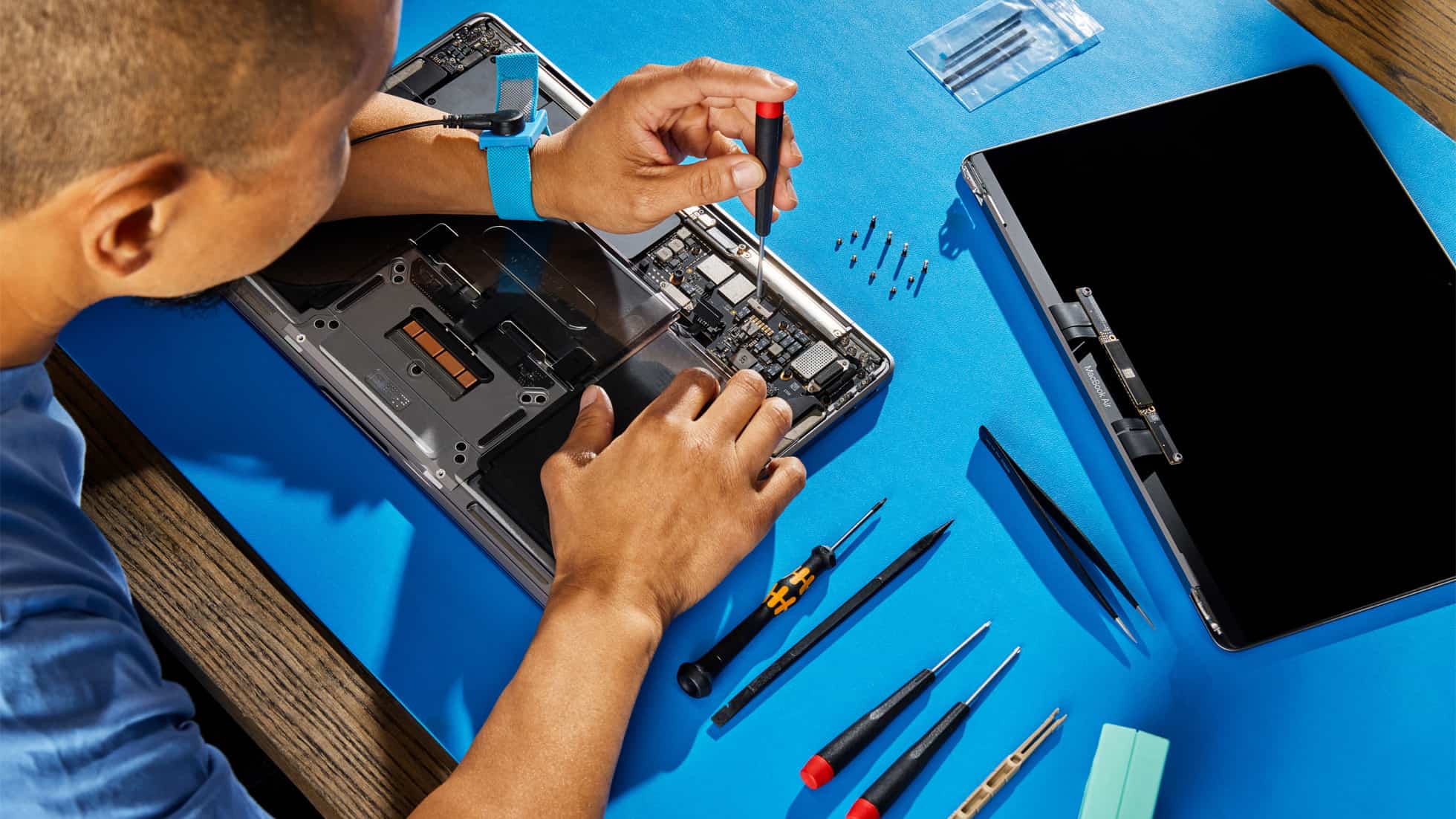Starting June 21, you can order genuine Apple parts to self-repair any iPhone 14, M2 MacBook Air or MacBook Pro with M2 Max or M2 Pro.

It took the iPhone nine months to join the program. In addition, Apple’s self-repair kit now covers its M2-powered Mac notebooks. Also, Apple has made it easier to repair an iPhone by not requiring a phone call to validate the parts.
iPhone 14 and M2 MacBooks join Apple’s self-repair program
Aside from the iPhone 14, iPhone 14 Plus, iPhone 14 Pro and iPhone 14 Pro Max, Apple’s M2-based notebooks, like the 13-inch MacBook Air and MacBook Pros, are now covered by the repair program. The new 15-inch MacBook Air is currently absent from the company’s Self Service Repair.
The company will offer genuine parts for the above devices through the Self Service Repair Store beginning Wednesday, June 21.
On top of that, the repair program now covers the Face ID True Depth camera and top speaker for the iPhone 12 and iPhone 13 models, as well as M1-powered Mac desktops in the United States, Belgium, France, Germany, Italy, Poland, Spain, Sweden and the United Kingdom.
Launched in November 2021, the Self Service Repair program was updated in August 2022 to cover the M1-powered MacBook Air and MacBook Pro models.
iPhone self-repair improvements
If you’re brave enough to repair an iPhone yourself, you’ll like the fact that a phone call to validate the repair is no longer required.
This was perhaps the biggest annoyance with the repair program—you had to call Apple’s support department to run the final step of a repair. This step was required to authenticate and calibrate genuine parts before they could be used in a repair.
Instead of the clunky process, you just put your device into diagnostics mode and follow onscreen prompts, per the Apple Newsroom announcement.
For Touch ID or Face ID replacements, the new system automatically links these biometric sensors to the device’s Secure Enclave cryptographic processor.
Should you repair Apple devices yourself?
Apple’s long opposed the right-to-repair movement, so it’s not surprising it would like it best if you trust it or its authorized service providers with repairs.
“For the vast majority of users who don’t have experience repairing electronic devices, visiting a professional authorized repair provider with certified technicians who use genuine Apple parts is the most reliable way to get a repair,” it notes.